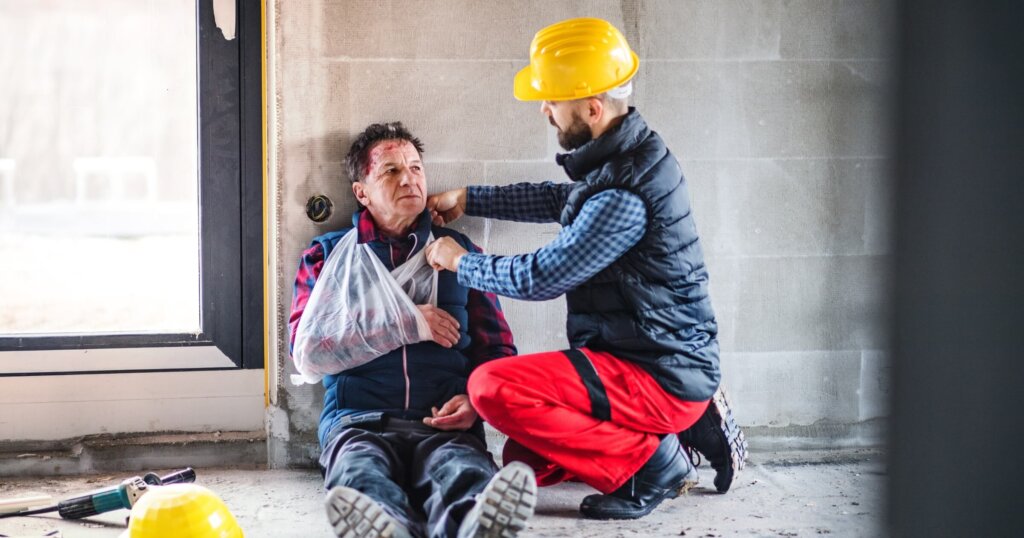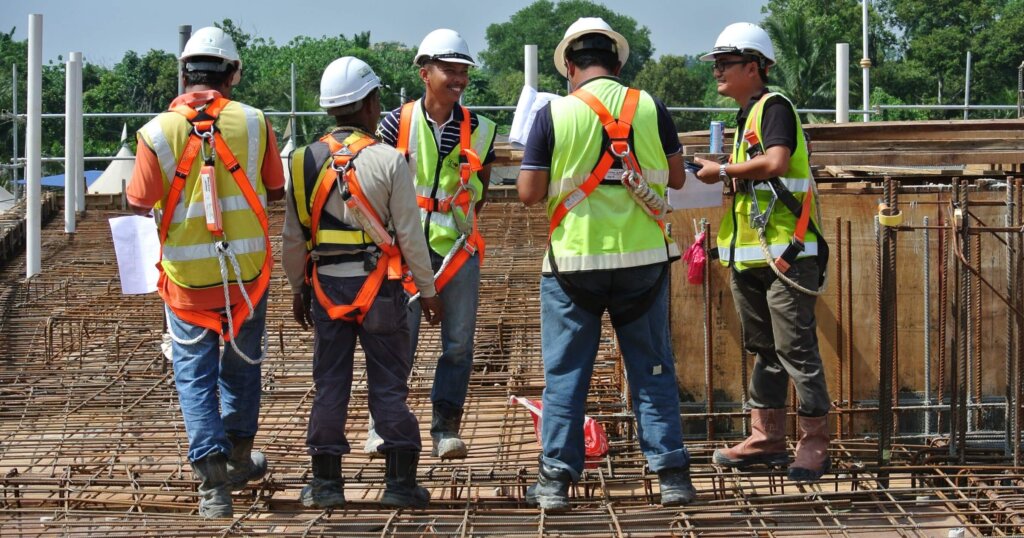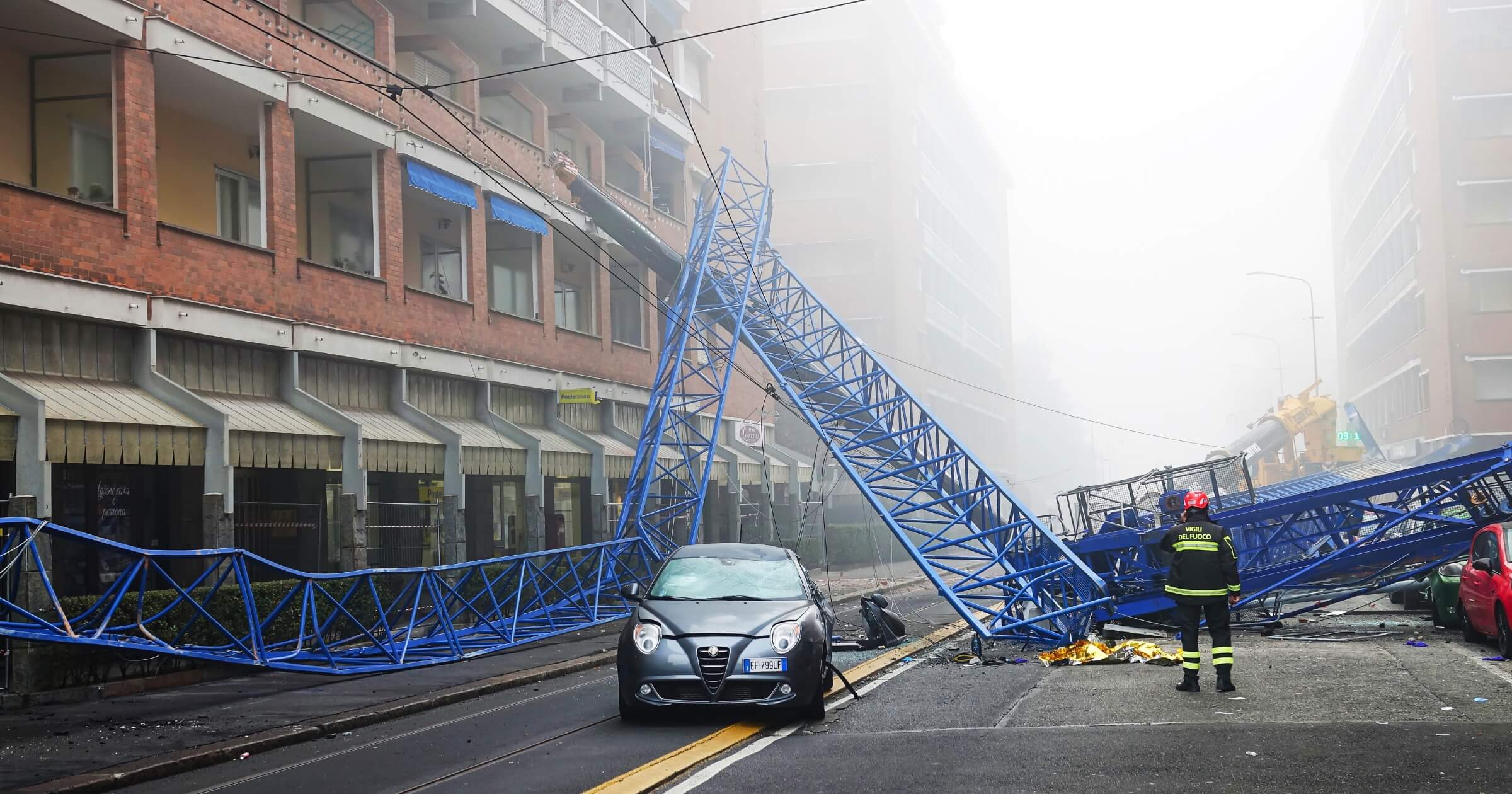Construction is one of the most hazardous industries in the United States, accounting for nearly one in five workplace fatalities. Despite safety regulations and advancements in protective equipment, deaths and injuries in the construction industry remain a pressing issue. The leading causes of fatalities include falls, struck-by incidents, electrocutions, and caught-in/between accidents—often referred to as the “Fatal Four.”
This article will explore the latest statistics, the causes of construction fatalities, injury rates, demographic disparities, financial costs to the industry, and whether safety improvements are making a difference.
How many construction workers die each year?
- Total construction-related fatalities in 2023: 1,075 deaths, the highest number recorded since 2011.
- Fatal injury rate: 9.6 deaths per 100,000 full-time workers in 2023.
- Falls accounted for 39.2% of all construction worker deaths.
- Transportation-related incidents caused 240 deaths in 2023, making it the second leading cause.
- Contact with objects and equipment caused 148 fatalities, often due to heavy machinery or falling materials.
- Harmful substance exposure led to 820 fatalities in 2023, including toxic chemicals and carbon monoxide poisoning.
- Small construction companies (1-10 workers) accounted for 57% of fatal injuries, showing a lack of enforcement in smaller operations.
- Older workers (55-64) had the highest fatality rate, often due to reduced reaction time and the severity of injuries.
- Men accounted for 91.5% of all workplace deaths, reflecting the male-dominated nature of the construction workforce.
Most common causes of death in construction
Falls
Falls remain the number one cause of construction worker deaths, responsible for nearly 40% of fatalities. Workers frequently fall from scaffolding, ladders, roofs, and unfinished structures due to improper or missing fall protection. In many cases, safety harnesses are not provided or are used incorrectly, leading to catastrophic injuries. Wet surfaces, unguarded edges, and loose materials increase the risk. Regular safety training and enforcing OSHA’s fall protection rules could prevent the majority of these deaths, yet violations remain widespread.

Struck-by incidents
Workers are often struck by heavy equipment or construction vehicles. This is especially dangerous in crowded job sites where large machinery operates in close proximity to workers on foot. Struck-by incidents also occur in highway construction zones, where passing cars pose a serious risk. Many accidents happen because of blind spots, lack of high-visibility clothing, and poor communication between workers and machine operators. Proper signaling procedures and restricting pedestrian access to equipment zones can significantly reduce these fatalities.
Electrocutions
Electrical hazards kill hundreds of construction workers every year, primarily due to exposed wiring, faulty power tools, and contact with overhead power lines. Many incidents occur because workers assume wires are not live or fail to de-energize circuits before working. Wet conditions, metal scaffolding, and damaged extension cords increase the risk of electrocution. OSHA mandates lockout/tagout procedures, but non-compliance remains a significant problem, particularly on smaller job sites.
Caught-in/between incidents
Workers can be crushed by collapsing trenches, heavy machinery, or shifting building materials. Excavation work is especially hazardous, with trench collapses suffocating workers within seconds. Machinery like forklifts, cranes, and compactors pose additional dangers if proper lockout procedures aren’t followed. Employers are required to provide protective trench boxes and machine guarding, but lack of enforcement leads to preventable fatalities.
How many construction workers get injured per year?
Non-fatal injuries are far more common than fatalities, affecting hundreds of thousands of construction workers each year.
- 169,600 construction-related injuries were reported in 2022, making it one of the most dangerous industries.
- 11 days is the average time off work due to construction injuries.
- Hand and finger injuries account for 25% of all construction-related injuries, often from power tools and sharp materials.
- Back injuries are one of the most common long-term disabilities in construction.
- Nearly 50% of construction injuries involve falls, slips, or trips.
- Roofing contractors have one of the highest injury rates, with 79.5 injuries per 10,000 workers.
- Knee injuries result in an average of 19 lost workdays per incident.
- 56% of construction workers have hearing impairment by the time they reach retirement age.
Most common body parts injured in construction
- Hands and fingers: Construction work involves constant use of tools and machinery, making hands and fingers especially vulnerable. Crush injuries from power tools, saws, and heavy materials are common. Lacerations and amputations occur when proper hand protection is not used.
- Back and spine: Heavy lifting, bending, and repetitive motions put construction workers at risk for back injuries. Herniated discs and muscle strains are common, especially when workers do not use proper lifting techniques. In more severe cases, falls from heights can lead to spinal cord injuries and paralysis.
- Knees and legs: Frequent kneeling, climbing, and working on uneven surfaces leads to knee and leg injuries. Torn ligaments, fractures, and joint problems often develop over time. Falls from ladders and scaffolding also contribute to serious leg injuries that can require surgery and months of recovery.
- Head and brain: Head injuries are a major concern in construction due to falling objects and slips. A single impact can cause concussions or traumatic brain injuries. In some cases, workers suffer permanent cognitive damage or loss of motor skills. Hard hats are required on most job sites, but enforcement is still inconsistent in some areas.
Demographic breakdown: Who is more at risk?
Construction fatalities are not evenly distributed across all workers. Some demographics face a higher risk than others.
- Hispanic and Latino workers have a higher fatality rate than other racial groups. Many work in high-risk jobs with less access to safety training.
- Older workers are more likely to suffer fatal injuries due to slower reaction times and pre-existing health conditions.
- Male workers account for the vast majority of construction deaths, as the industry remains male-dominated.
Biggest costs of construction deaths on the industry
- Medical and compensation costs: Fatalities and serious injuries result in high medical bills and workers’ compensation claims. Employers often pay millions in settlements when safety violations lead to preventable deaths.
- Lost productivity: When a worker is injured or killed, job site productivity takes a hit. Projects can be delayed for investigations, and employers must find replacements.
- OSHA fines and legal fees: Companies that fail to follow safety regulations face steep fines from OSHA. In cases of extreme negligence, legal fees and lawsuits can cost companies even more.
Is site safety actually improving?
Despite advancements in safety equipment, stricter regulations, and increased awareness, construction fatalities have not seen a significant decline. Many job sites still struggle with enforcing safety protocols consistently. In some cases, safety violations go unreported, and inspections may not be frequent enough to catch dangerous conditions before accidents happen. Even with OSHA regulations in place, compliance varies widely across different companies and projects.
One major factor is the pressure to complete projects on time and within budget. Tight deadlines often lead to safety being deprioritized in favor of productivity. Some companies, particularly smaller contractors, may avoid investing in expensive safety programs or training due to financial constraints. Workers may also feel pressured to take risks, either to meet expectations or because they fear job loss if they slow down operations. This can lead to ignoring proper fall protection, working in hazardous conditions, or skipping crucial safety checks.

Another ongoing challenge is worker resistance to safety protocols. Some workers view personal protective equipment (PPE) as uncomfortable or inconvenient, while others believe experience alone is enough to keep them safe. This mindset is especially dangerous when dealing with unpredictable hazards. Safety training programs can help, but their effectiveness depends on whether workers and employers take them seriously.
OSHA penalties have increased over the years, yet some companies still treat fines as a cost of doing business rather than a deterrent. Raising fines and enforcing penalties more aggressively may encourage compliance. Additionally, implementing more frequent and unannounced site inspections could help catch safety violations before they lead to serious accidents.
However, real progress requires a cultural shift within the industry. Safety needs to be prioritized over speed and cost savings at every level, from management to the workers on-site. This means embedding safety into the planning stages, making sure every worker understands the risks. Without this change, construction will remain one of the most dangerous industries to work in.
Bottom line
Construction deaths and injuries continue at alarming rates, largely due to falls, electrocutions, struck-by incidents, and caught-in accidents. The statistics highlight the urgent need for improved safety enforcement. Workers, employers, and regulators will all need to a play a role in changing the perception of safety to make lasting change.
Want more construction news and reports? Subscribe to our newsletter to get the latest insights delivered straight to your inbox.



